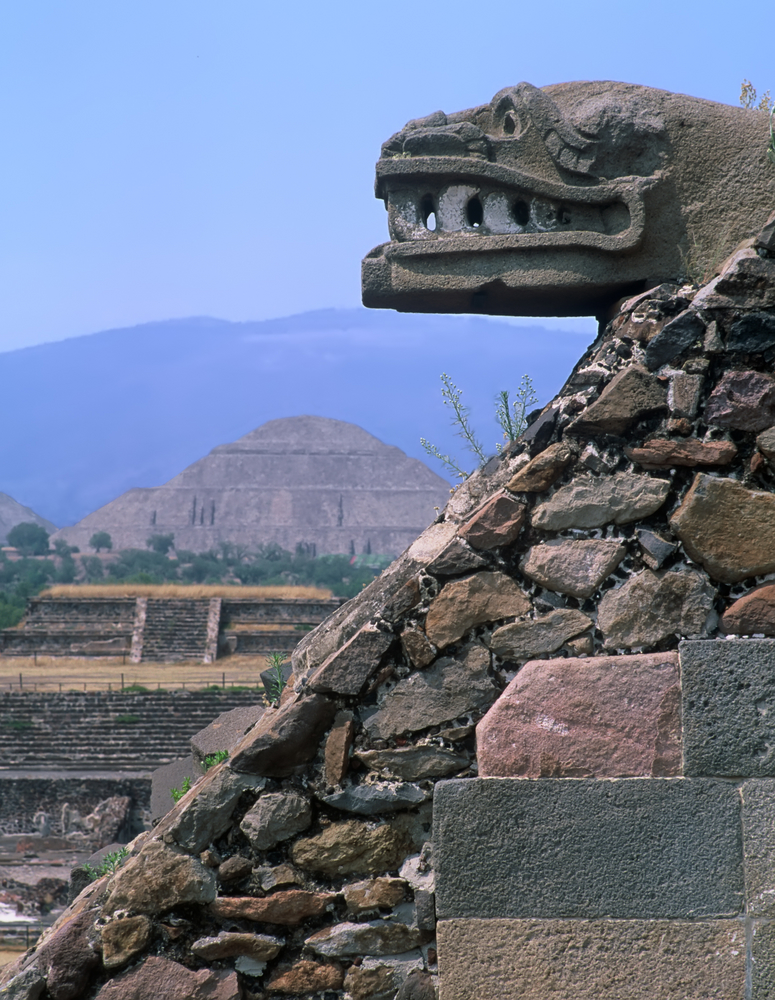Robot Discovers Burial Chambers in Ancient Temple

Like many other workers, it looks like Indiana Jones has been replaced by a robot.
A remote-controlled, mobile robot the size of a lawn mower has discovered three burial chambers deep within the shadowy recesses of the Temple of the Feathered Serpent, an ancient pyramid in Mexico.
The temple is part of the archaeological site of Teotihuacan, a vast complex of temples and pyramids about 31 miles (50 kilometers) northeast of Mexico City, NBC reports. [Image Gallery: Human Sacrifices Unearthed in Mexico]
Constructed almost 2,000 years ago, the city of Teotihuacan — with more than 125,000 residents, one of the largest cities in the world at its peak — was abandoned several centuries later for reasons that have yet to be discovered.
But the ancient site may soon reveal its secrets, thanks to Tlaloc II-TC. The robot was built with three transformer-like stages: a lead vehicle that resembles "a Mars Rover-esque contraption," according to Gizmodo, a smaller bot that unpacks itself to take infrared scans of the space, and a small video drone.
In 2011, archaeologists using radar technology discovered a long tunnel marked with mysterious symbols deep beneath the Temple of the Feathered Serpent. The tunnel was largely sealed off about 1,800 years ago.
It was expected that the tunnel would end in a burial chamber — but the Tlaloc II robot instead found three chambers. Archaeologists expect that future explorations, by robots or humans, will reveal the burial chambers of some of Teotihuacan's leaders.
Sign up for the Live Science daily newsletter now
Get the world’s most fascinating discoveries delivered straight to your inbox.
The Temple of the Feathered Serpent, sometimes called the Pyramid of Quetzalcoatl, has been the site of some surprising archaeological discoveries in recent years.
Deep inside the temple's core, a mass burial pit containing the remains of about 200 warriors and their weapons was discovered in the late 1980s. Most of them had their hands tied behind their backs, suggesting they were sacrificed.
And in 2003, after a period of heavy rains, a small seep hole was opened up near the base of the pyramid. That small hole turned out to be one end of the tunnel network now being explored.
Though the Teotihuacan site has been investigated for decades, little is known about the people who inhabited the site, which had been abandoned for centuries when the region's Aztec civilization rose to power.
The Aztecs called the mysterious 32 square-mile (83 square kilometer) site "The Place Where Men Become Gods."
Among the most visited archaeological sites anywhere, Teotihuacan is renowned for the majesty of its buildings, its colorful murals and the meticulous planning of its urban core, including the main thoroughfare, the Avenue of the Dead.
No evidence of any ruler or monarch has ever been found, though some experts believe that once they're explored, the burial chambers within the Temple of the Feathered Serpent may change that.
Follow Marc Lallanilla on Twitter and Google+. Follow us @livescience, Facebook & Google+. Original article on LiveScience.com.










